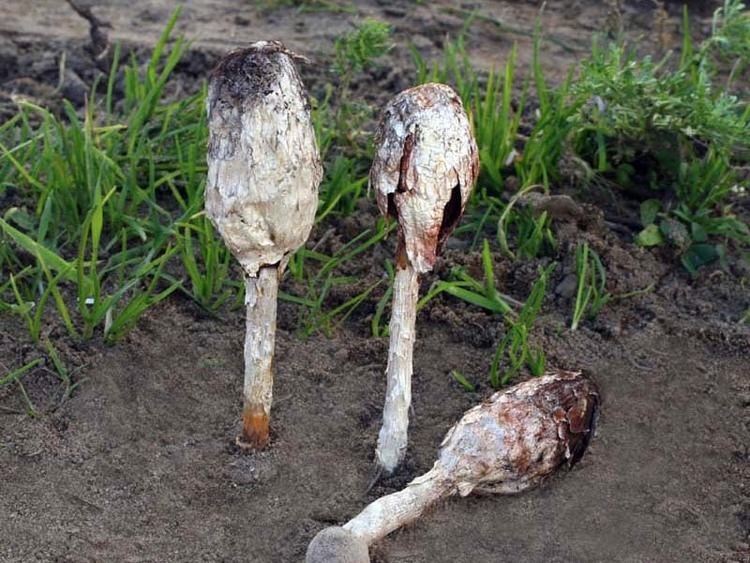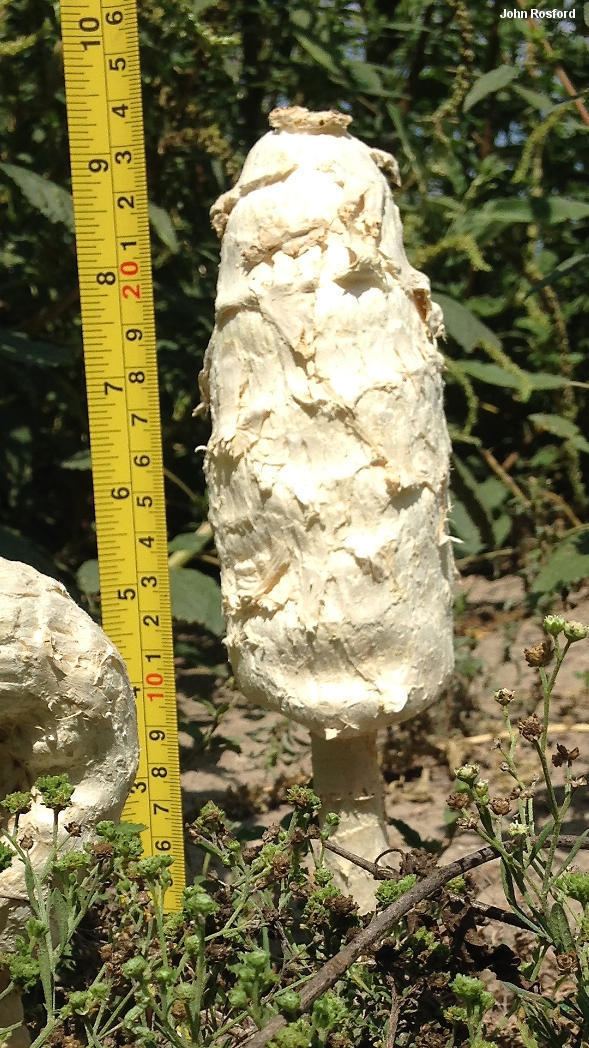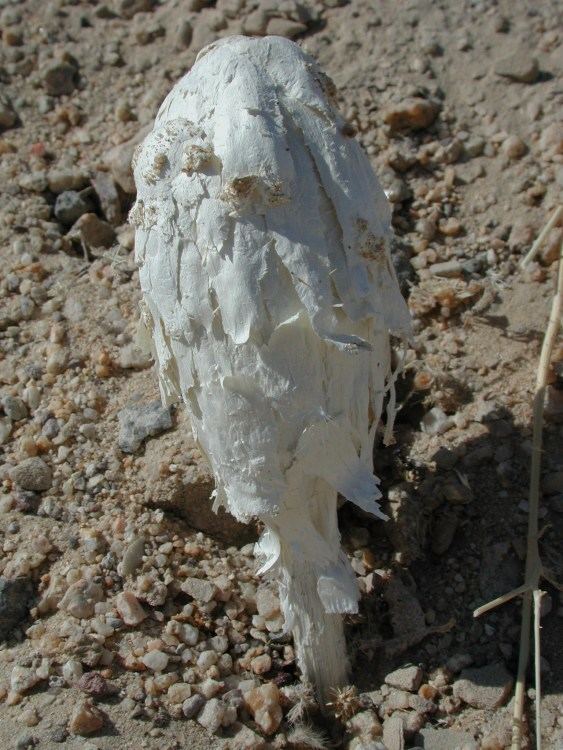Kingdom Fungi Family Agaricaceae | Division Basidiomycota Higher classification Agaricaceae | |
 | ||
Similar Montagnea, Basidiomycota, Agaricaceae, Agaricales, Gyrophragmium | ||
Podaxis longii fungi kingdom
Podaxis is a genus of secotioid fungi in the family Agaricaceae. Species, which have the appearance of a "stalked-puffball", have a worldwide distribution, and tend to be found growing solitary or scattered on sandy soils, especially in arid regions. Although close to 50 species have been described, it has been argued that many of them may represent extremes in the natural range of variations found in Podaxis pistillaris.
Contents
- Podaxis longii fungi kingdom
- Podaxis beringamensis fungi kingdom
- Description
- Taxonomy
- Species
- Uses
- References

Podaxis beringamensis fungi kingdom
Description

Fruiting bodies have the appearance of an unopened Coprinus comatus, with a stipe and a loose, brown to blackish powdery gleba at maturity. Basidiospores are obovate, thick-walled with a large apical pore, and typically 10-17 x 9-12 µm in size. Clamp connections are present.
Podaxis is a common inhabitant of soil and termite mounds throughout the drier regions of the tropics and subtropics of the world. P. pistillaris is a ground-inhabiting species, but most Podaxis species in the rest of the world are associated with termite mounds. This includes the Australian species P. beringamensis.
Taxonomy

The genus was originally named Podaxis and circumscribed by Nicaise Auguste Desvaux in 1809, while Elias Magnus Fries later (1829) called the taxon Podaxon. Although a number of articles have used the latter name, Podaxis is the preferred name as it has nomenclatorial priority due to its earlier publication.

Early suggestions that Podaxis was related to the genus Coprinus were later confirmed using phylogenetic analysis based on sequence data of rDNA genes. This research showed that Podaxis is in a clade with the species Montagnea arenaria and Agaricus pocillator, and the genus Leucocoprinus. For this reason, Podaxis was transferred to the family Agaricaceae (order Agaricales) from the now obsolete family name Podaxaceae (order Podaxales).

A section of Podaxis, named Parvispora, was circumscribed to accommodate three species (P. argentinus, P. longii and P. microsporus) with small spores.
Species
As of January 2016, Index Fungorum accepts 28 species in Podaxis:
Uses
The dark purple spores of Podaxis species are used by Australian aborigines as a face paint. Podaxis aegyptiacus is used as a common traditional medicine in the Bamako region of Mali for wound-healing, and water extracts from the mushroom have been shown to have carbohydrates with beneficial effects on the immune system in vitro.
